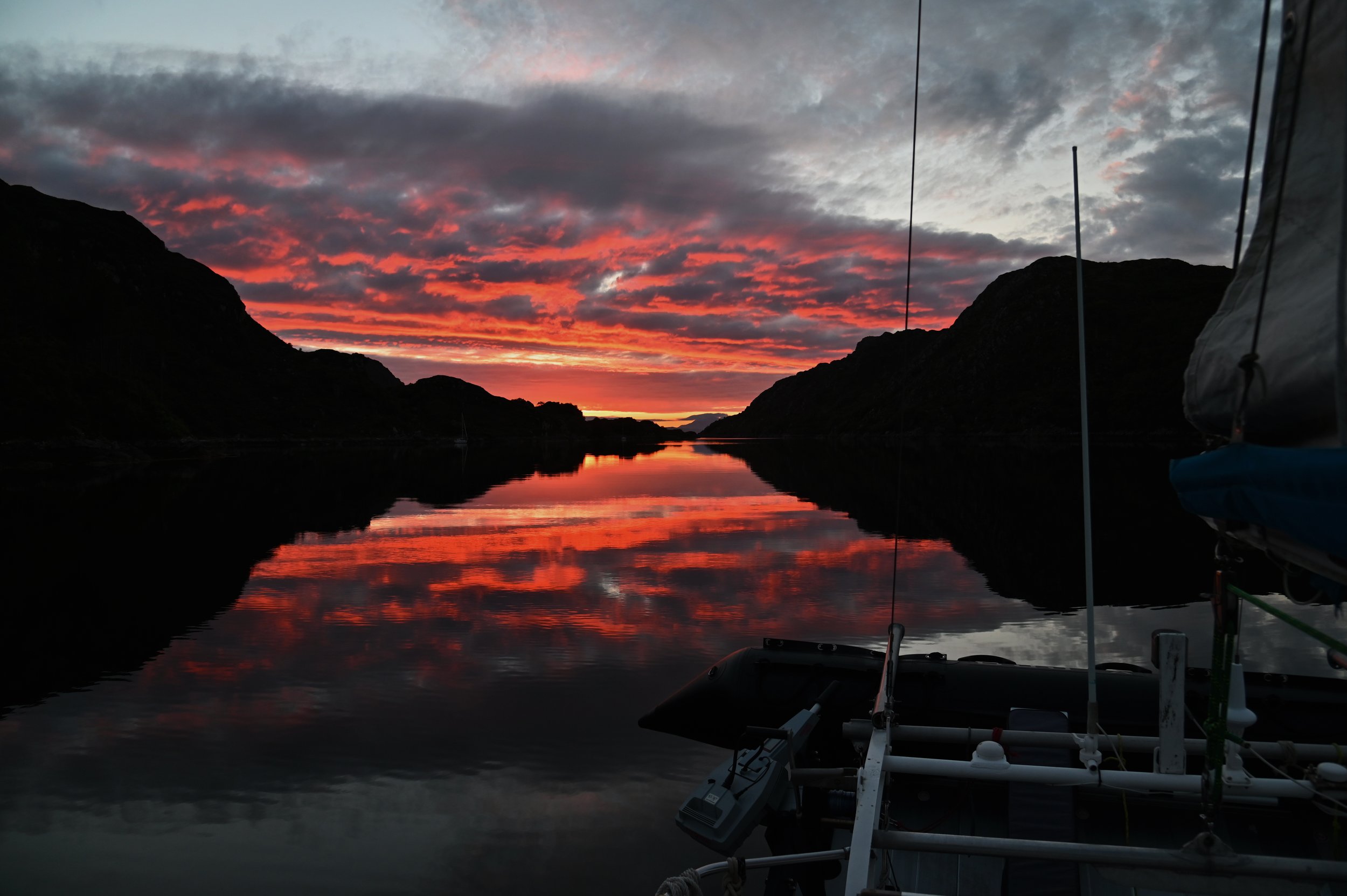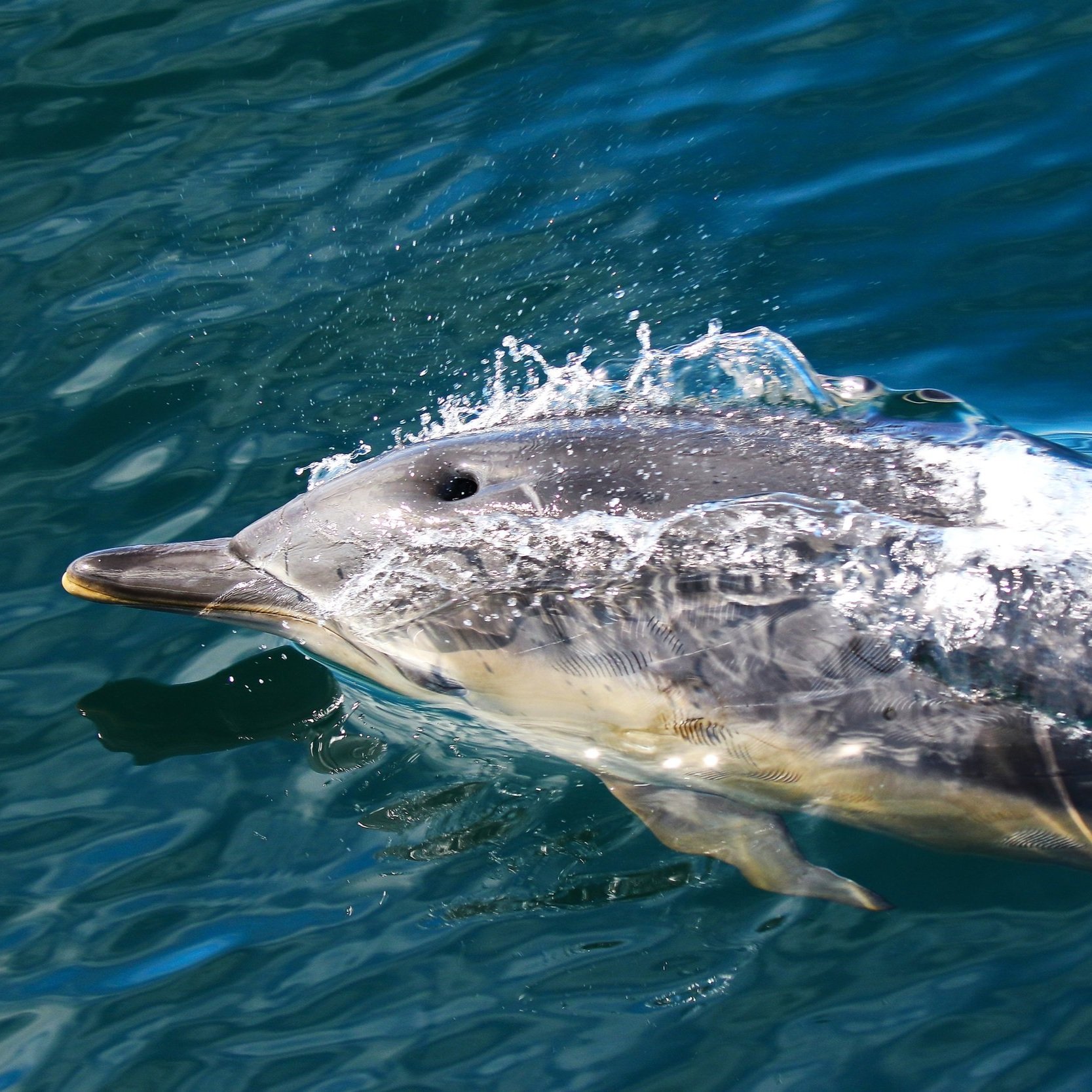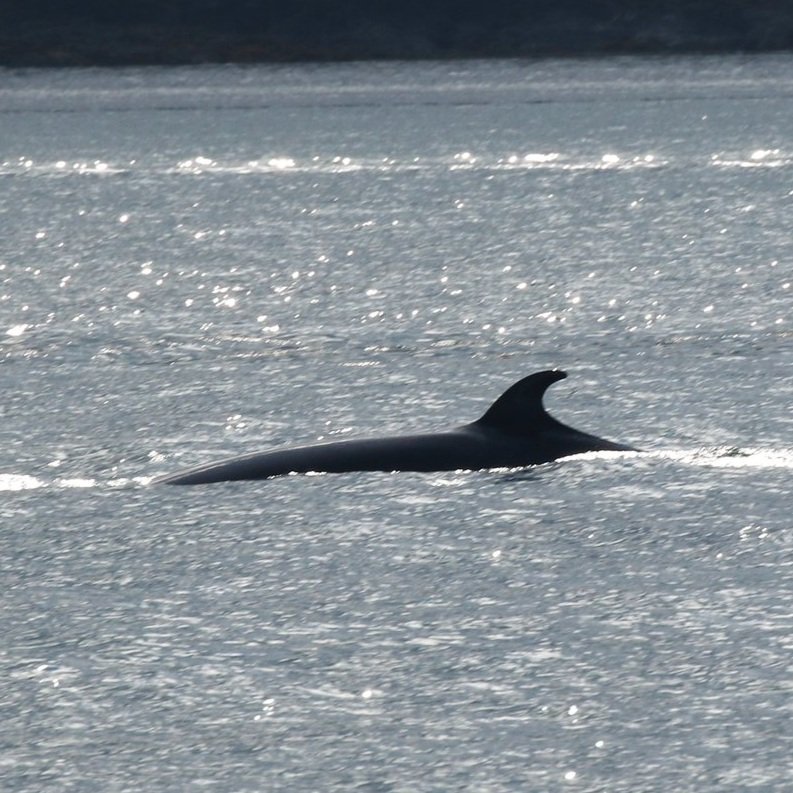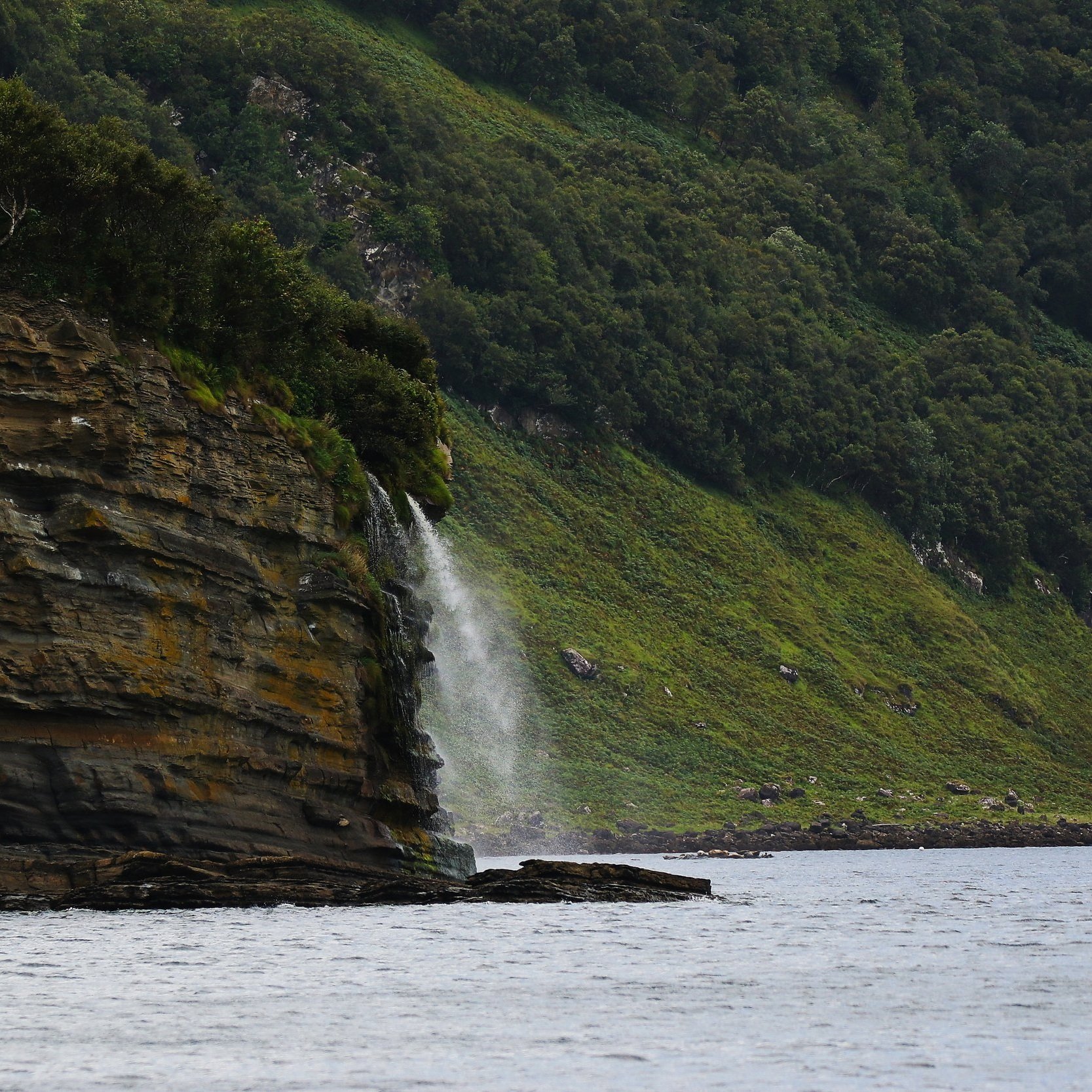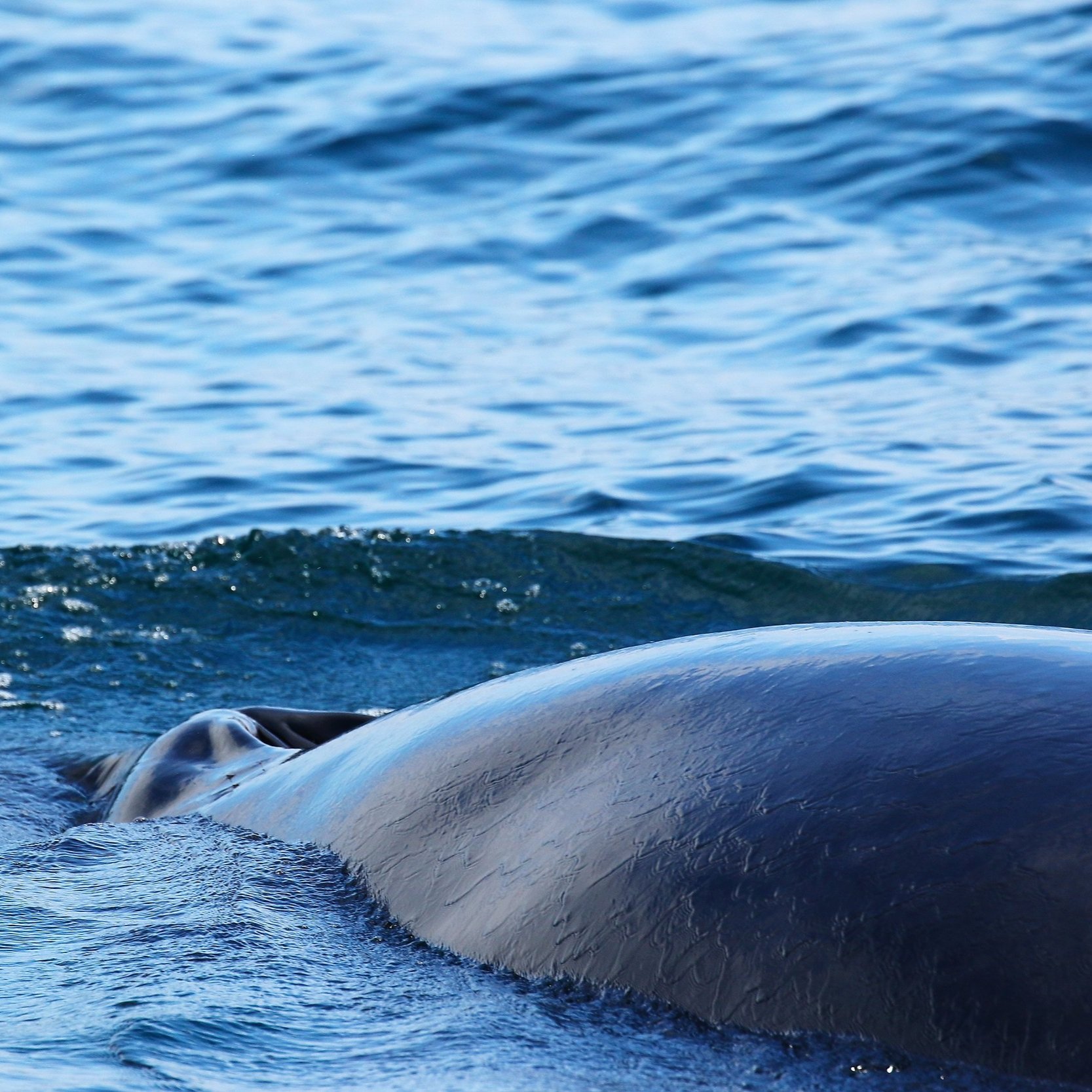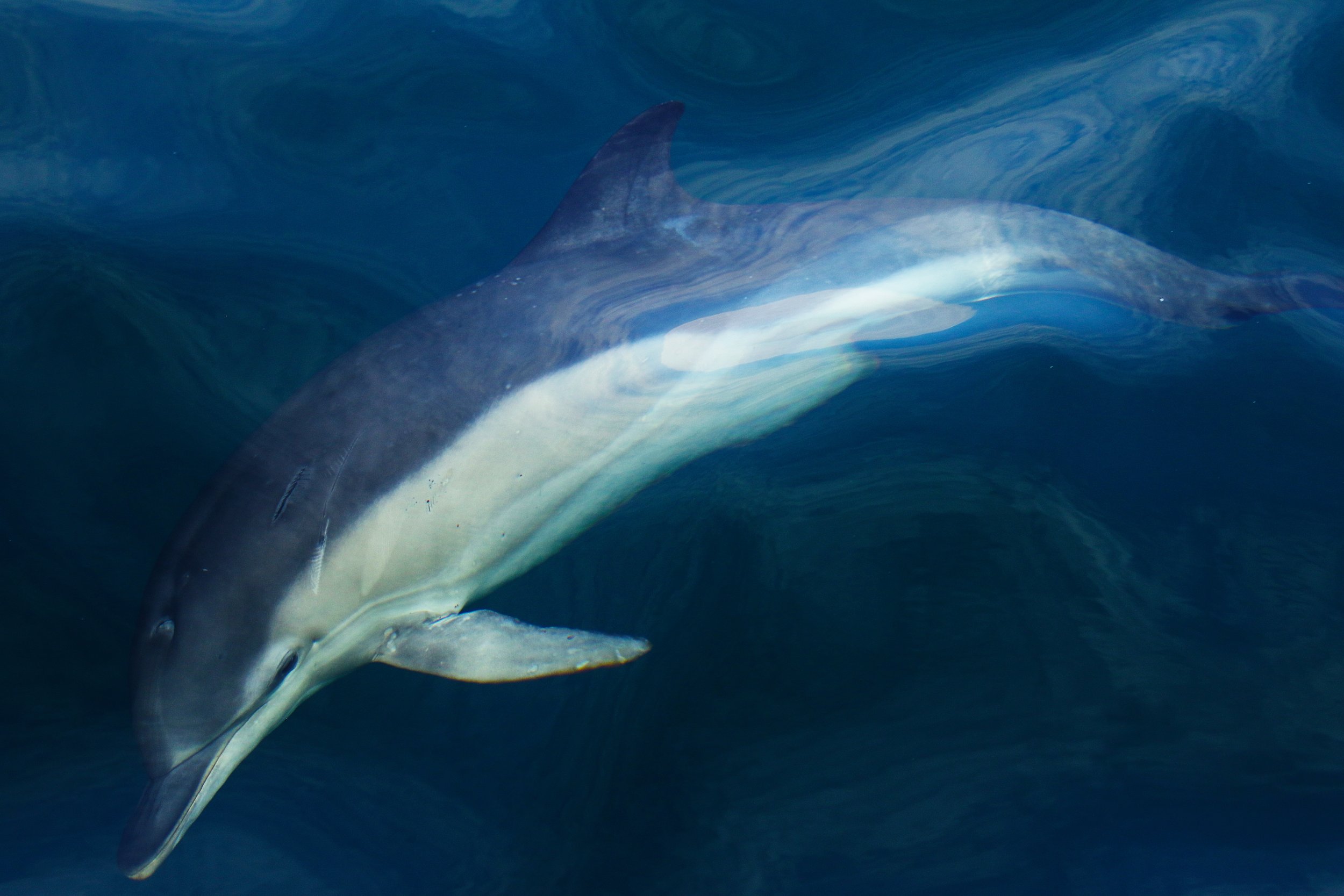Fair seas and (almost) daily dolphins on the thirteenth expedition of 2022
OUR THIRTEENTH RESEARCH EXPEDITION OF 2022 LEFT TOBERMORY FOR A TWELVE-DAY SURVEY MONITORING THE WATERS OFF THE WEST COAST OF SCOTLAND ONBOARD SILURIAN - OUR RESEARCH VESSEL. CALM WEATHER AND FAIR SEAS RESULTED IN SOME FANTASTIC ENCOUNTERS, WITH COMMON DOLPHINS WELCOMING IN THE DAY ALMOST DAILY! HERE CRAIG MACKIE, SCIENCE OFFICER ON BOARD, RECALLS THE EXPEDITION…
After a morning of introductions and training with the group, we were all ready to set off from Tobermory for a twelve-day adventure around the Hebrides. The weather started off unpromising, with light showers and moderate winds, causing it to be a bit lumpy as we rounded Ardnamurchan point. Despite the swells the first group of common dolphins were spotted leaping in a speedy manner. We turned northeast to shelter from the growing winds that were forecast, heading along the top of the Ardnamurchan peninsula.
A lone dolphin was sighted, which heralded in a fantastic encounter with an inquisitive minke whale. The whale followed the boat around for a glorious 30 minutes of “where will it pop up next” as it gave us all fantastic views, slowly passing by both sides of the boat before moving away westwards.
We continued east to the stunning quiet haven of Loch Moidart and were treated to fantastically glass calm waters and a beautiful red sky as the sun set.
The second day started with a bang - we’d barely finished breakfast before the first pod of common dolphins was recorded as we exited the loch. Two small pods came together to forage, singing delightful tunes into our hydrophone. We headed north, between the Mainland and the Small Isles, with a few more small groups of commons and some porpoise sighted, then a minke popped up near the boat before quickly disappearing again. More dolphins and another minke were briefly spotted, before we headed into Kyle Rhea - a shallow area with strong tidal current which would mean us briefly taking the hydrophone out of the water. Several common seals were seen playing and foraging within the strong currents and the bird spotter got a good test with large numbers of kittiwakes, gull, guillemots as well as two eagles - one white tailed, the other golden. We rounded the passage and sailed under the Skye Bridge, where the ocean swells grew larger making sightings a little harder to come by. We headed towards the eastern side of Raasay to anchor and just as we called ‘off effort’ two groups of common dolphins surfaced. We continued to our anchorage near a fantastic waterfall where the guests could go and explore the shore and have a swim. We spent the evening watching an otter foraging around the shore near the boat.
The next morning, we got off to another fast start with a large group of commons feeding in front of the vessel as we headed north. Porpoises, seals and common dolphins were sighted before a much larger splash was seen further ahead. Tracking the splashes hidden between the swells, we finally caught eyes on the animals - a group of around three bottlenose dolphins jumping straight into the air before crashing down again, before we could get a closer look they had vanished. Rounding Rubha Hunish and into Loch Snizort two minkes showed themselves as we anchored in Aros Bay. We were greeted onto our anchorage by a white-tailed eagle flying around the cliffs before perching in a nearby tree. Later on, whilst socialising in the saloon, Science Officer Craig spotted something in the water and ran out to the deck to check it out - the fin of a small basking shark, cutting through the water briefly before sinking into the depths.
We set of north again the following day and continued with what was fast becoming a tradition - seeing a large group of common dolphins feeding near the boat. The dolphins were part of a feeding frenzy, with gannets bombarding the water in their hundreds causing wee eruptions everywhere we looked. As we exited the loch, we had a minke whale foraging a few hundred metres away. We passed Waternish Lighthouse and turned south. It was fairly quiet down the coast bar one small group of commons. After heading south for several miles we took a sharp turn to the west and made for South Uist. We anchored in the calm waters of Loch Eynort, where the volunteers were excited to explore ashore. This excitement soon waned however as the midges (which are notoriously bad around this area) descended causing everyone to retreat back aboard for the night.
Another morning, another group of common dolphins. With the wind dropping, the waters calmed making sightings that much easier as we started a long transect to the southeast. This allowed one of the volunteers to spot some dolphins a way out in the distance, a lucky sighting as it turned out. As we looked through our binoculars to get some positive identification on the species a large black mass burst through the water in front of us, crashing back onto the ocean surface with a huge splash…a basking shark. Leaping several times around the boat, the shark put on a fine display until suddenly it was gone and no more splashing was seen. We continued on our track past Hyskier, where several grey seals were recorded. As we approached Hawes Bank to the northwest of Coll we started to get more sightings with commons, minke and porpoise all around. We continued to the northernmost tip of Coll where we would anchor for the evening.
We were halfway through the trip and although we’d had some incredible sightings so far, the best was yet to come. The water was flat calm as we headed back west towards Mingulay. In keeping with tradition, we had pods of common dolphins within the first hour of survey, bowriding and leaping around the boat. All went quiet before we noticed some fins cutting the water in a quick frenzy up ahead, before vanishing as we approached. While they looked almost dolphin-like it would be unusual for them to disappear so suddenly on such a calm day. As we got closer to the area, our suspicions were confirmed… it was a group of around 10-15 large tuna! We continued through an ocean brimming with life; more dolphins and lots of porpoise were feeding in the area. One of the volunteers spotted something else in the distance, a large fin waving over the water, the unmistakable fin of a fish, unfortunately it dived before we got closer and it wasn’t seen again. A number of grey seals were spotted as we left Hawes bank behind, heading to deeper water. Before long we had our first minke whale sighting of the day, one turned to two which in turn became three. One individual was incredibly inquisitive, slowly lulling around the boat. The clear conditions and good lighting meant that the entire animal was clearly visible giving one of the best minke whale experiences I’ve ever had as it cruised lazily under the bow. Although they are the smallest baleen whale found in the UK the sheer size of them is mind blowing when you see them in this context.
Continuing on, we encountered a huge pod of common dolphins, around 100 individuals and they played around the boat in the calm waters. In amongst them another flapping fin was spotted on the surface…another sunfish! This one was not as timid as the last, sitting on the surface and giving us amazing views as it lay flat soaking in the warm summer sun and demonstrating why it’s been named accordingly.
After a long and exciting day, we finally approached Mingulay, eerily surrounded with a thick light mist giving it a haunting look. The moaning and howling we could hear was thankfully confirmed to be emanating from the large number of Grey seals that inhabit the bay and not something otherworldly.
The next day would prove to be a little quieter on the sightings front and was the first day where we didn’t see dolphins within the first hour of heading out (we may have been getting a bit spoiled at this point). We headed round Barra Head and into the open Atlantic, where we took a course towards the Monach Isles. This is one of the areas least monitored in our study area, as it relies on having very good conditions to get out this way for any length of time. Today the conditions were incredible, with the sea as flat as I’ve ever seen and the sun shining down on the team. On the transect a single minke whale was spotted, as well as a small group of common dolphins quite far off the boat. By far the most commonly recorded species was the grey seal - no less than 50 were spotted on the approach to anchor. We settled in for the night and went to visit the lighthouse on the island nearby before being treated to a fantastic sunset over the rocky reefs that protrude from the islands shores.
The next morning we were again treated to flat calm conditions and regained our tradition of seeing dolphins soon after we set off. Lots more grey seals dotted themselves around the boat as we headed down towards our destination at Eriskay. Zigging and zagging into the bay a fin was noticed near to on of the channel marker buoys as two bottlenose dolphins were spotted “playing” together over the tidal streams. We drew closer to our anchorage and were in awes of the clarity of the water, getting clear views of the bottom despite the depth.
We enjoyed a swim before heading onto land for a quick visit to the local pub where the group could relax in a more stable and spacious setting than they had been used to.
With the expedition due to end in the next couple of days we dutifully, if a little reluctantly, headed back east towards the south coast of Tiree. Once again we had common dolphin pods all around as we came out of the bay separating themselves into many small groups. Things quietened down as we continued through the deeper waters of the sea of the Hebrides but before long we were approached by what, at first, seemed like a few common dolphins which then transformed into a huge pod with animals everywhere you looked around the boat which we estimated to be around 200 in number. Several of the groups came and joined the boat on our journey for the next 20 minutes or so before turning and heading away as quickly as they had arrived leaving us to continue on alone. After approaching Tiree, we ventured up the coast and anchored in Faell Bay, on the southwest of Coll. Another gorgeous sunset was on the cards and the volunteers enjoyed a lovely night on deck as the sun dipped below the headland.
It was the final day of survey and we headed up along the coast of Coll as we slowly made our way back to Tobermory, where we had begun our adventure what seemed like an age ago. We were not disappointed as our streak of morning dolphins continued with a small pod of commons feeding nearby. Continuing round the tip of Coll, a fin was spotted in the distance followed by a large splash - but unfortunately the conditions had picked up and a positive identification was not possible. We continued over towards Ardnamurchan and into the sound of Mull with no more sightings. Feeling a little down at the lack of activity, we were soon given a final parting gift as we approached the harbour - a group of porpoise, soon followed by a minke whale, seemingly playing with a local kayaker placed the cheery on top of what was an incredible trip.
The volunteers had earned a well-deserved meal and drink in the local eatery having travelled over 400 miles in the past twelve days sighting over 1,000 common dolphins and reporting 8 different species of marine life recorded (as well as some others amazing wildlife and scenery). It was truly one of the best experiences I’ve had around the Hebrides and I was glad they could all share in it having put in so much effort.
Across the 12 days, the group surveyed 405.6 nautical miles of the Hebridean waters encountering 8 different species of marine mammals.
A big thank you to volunteers Dominic, Claire, Helen, Finn, Rhona and Nikki. Your incredible efforts have helped contribute towards aiding the monitoring and protection of marine mammals within the Hebrides.
THANKS ALSO TO NATURESCOT FOR SUPPORTING THE DATA COLLECTION ON BOARD SILURIAN.


